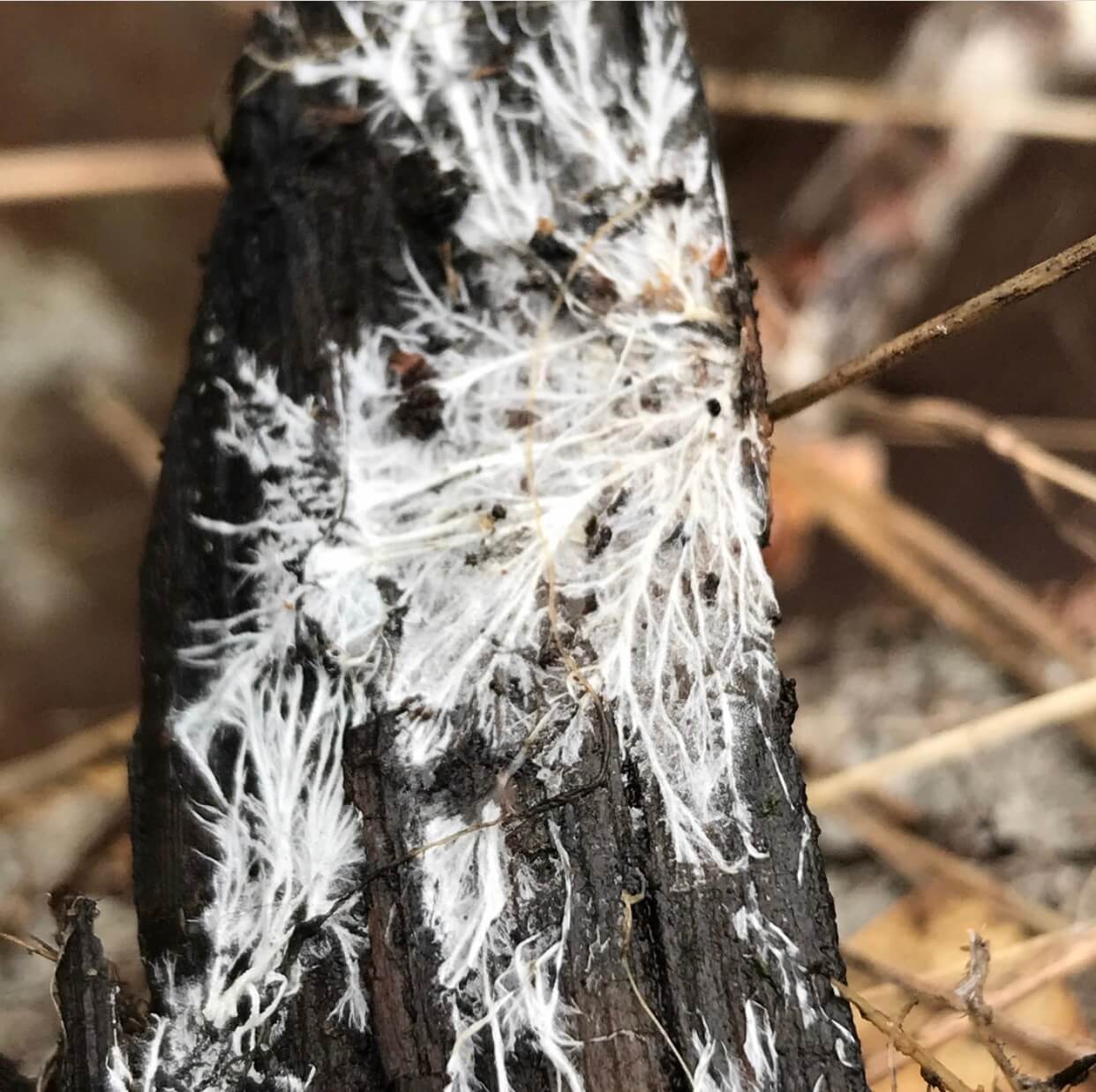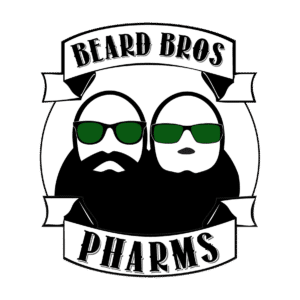Today we are going to introduce you to the cultivation technique known as Korean Natural Farming (KNF), beginning with how one of it’s most vocal practitioners found her way to this regenerative style of farming that keeps gaining traction. We’ll take a deeper dive into the topic in upcoming articles.
For over 5 years and more than 500 original articles, Beard Bros has always brought you the cannabis news you need, without all the fluff. We’re proud to present the Higher Learning series, where we partner with some of the best brands and brightest minds to give you expert insights and insider takes on all aspects of the industry!
A Modern Cannabis Love Story:
Korean Natural Farming, Solar Pumps, and Tractors
by Wendy Kornberg
The year was 2017, and while five years ago may not seem long for some, there are certain sets of years that seem to last a lifetime. Back then I was still with the father of my children and “legal” California cannabis was just beginning to enter real regulation. The legacy market, for the most part, still didn’t have much of a clue as to what was to come. Knowing that governments tend to love to be overly involved in almost everything and thus ruin systems that are functioning well without a ton of oversight, I had a different view than most of my shiny-eyed optimistic colleagues.
Following what I presumed to be good intuition, I quickly came to the realization that my small legacy cannabis farm wasn’t going to be able to weather the storm at the current rate of production while holding the same expenses. Our organic protocols, which consisted of expensive compost tea, lots of purchased organic manure, and organic alfalfa mulch, was still too high of a price point to be able to hold what was sure to be a complete shit storm. Enter the farming methodology that was to change my life in more ways that I could ever have imagined and in every way possible.
Cho Han Kyu from Korea, invented the Korean Natural Farming method in 1935. The fundamental insight of KNF is to strengthen the biological functions of every aspect of plant growth to increase productivity and nutrition. Biology thereby reduces or eliminates the need for chemical interventions, whether to protect against predation and competition with other plants. For example, the metabolism of indigenous microorganisms (IMOs) produce complete proteins, while insects prefer incomplete proteins.
I had heard of KNF a few years before all of this regulatory transition, but at that time the information on how to make and use the inputs was vague, at best. I made a ton of Fermented Plant Juice (FPJ) from huge old thistles, including the roots, and then had no clue what to do with it, so I asked the internet and was told to “go put it on the garden!”
Luckily I knew not to try a new thing on our cannabis, so the poor tomato plants in my garden became the guinea pigs that were to take the brunt of my ignorance. The FPJ not only burned the heck out of the plants, but it also brought in so many ants and other sugar-attracted bugs that it was mind boggling.
Related Reading- Emerald Cup Small Farms Initiative
I continued to read what I could about Korean Natural Farming, but was pretty sure that I was missing some very pertinent information. It was in Portland, Oregon in January of 2018 that I was able to start putting together some integral pieces of the puzzle that was my life.
The cannabis conference, now known as The Science of Regenerative Cannabis Cultivation Conference, was so full of great information and wonderful people that I convinced the organizers to bring it to my California home, Southern Humboldt County, with the understanding that I would help organize the venue and be the boots on the ground during the show.
It was at that event that I met my teacher, mentor, and future friend, Chris Trump. He talked about a five day hands-on KNF intensive later on in the year in Boise, Idaho. The promise of the class was a thorough knowledge of the basics of KNF and how to utilize it appropriately. The unspoken understanding was that this would be a new way to go beyond organic farming and save a lot of money in the process, and that in turn could save my farm.
Introduction to KNF Techniques
Korean Natural Farming (KNF) is a system for cultivating food and medicine crops and is not really meant to be used piecemeal. That being said, it can work well in conjunction with other ways to grow, but when used as a whole the results are superior and very cost effective. When we begin to feel the drawn to this practice we often feel lost on where to begin. There are a lot of options, as you can see simply by the beginning acronym list below, but the truth in the efficacy of KNF is in the soil building power of indigenous microorganisms (IMO). As we go through the series of the techniques of KNF you’ll find that many of the inputs, or “fertilizers,” are quite simple to make once you have mastered a few of the pro tips and tricks, but some, like IMO, require a bit more persistence to overcome the learning curve. Whenever possible we highly recommend taking a five-day hands-on intensive, if for nothing more than to get the smell for things.
While there are more acronyms in KNF than in the Navy Seals, the most important is IMO. This is a collection of indigenous organisms consisting mostly of fungi, but also containing terrestrial yeasts and bacteria. Most of our cash crops prefer a soil that is balanced higher on fungal content than bacteria, but most farm and potting soil is bacterially dominant. How do we shift this balance? By utilizing IMO. IMO is the cornerstone of KNF and does about 80% of the heavy lifting in this farming and gardening methodology; all the ferments and other processes are just the icing on the cake.

We are attempting to mimic nature in its perfect balance, and while in a natural system this can take centuries, we have found natural farming to shorten the time frame down to three years for minimal consistent results and fifteen years before the system is in balance without much human tinkering (ie, additional fertilizers, pesticides, or other inputs).
In order to recreate the diversity that exists in undisturbed nature we need many collections over many seasons from many different locations. This is how we create a shelf stable selection of microbiology that will thrive during any time of year, regardless of weather conditions. We know that plants and microbiology work together and without a thriving soil food web we struggle with premium crop health without resorting to pesticides, herbicides, and fertilizers. Going into a wild area such as a wildlife preserve, state or national park, or simply a remote forest is necessary to gain good collections.

When we look into the diversity of the microbiology present in areas of human disturbance, even places such as city parks or backyards with established natural areas, we find the diversity of soil biology is much more limited than what is found in locations that have been undisturbed for centuries. This balance of delicate biology that has found equilibrium naturally is what we want to preserve and move into our garden areas. We need to find the wild places where when we look under the first inch of leaf litter we can see fungal mycelium running through the soil and target that location. The resultant collections will contain hundreds if not thousands of species of fungi, yeasts, and bacteria.
Over the course of this series we will cover the basics of how to collect IMO, as well as how to prepare the other inputs necessary to implement the entire KNF method, but to get started it is best to familiarize one’s self with the standard acronyms.
ACRONYM GLOSSARY
FPJ (Fermented Plant Juice): a nutrient solution made with plants and sugar
FFJ (Fermented Fruit Juice): a nutrient solution made with fruits and sugar
LAB (Lactic Acid Bacteria): a solution made from milk and rice water wash
OHN (Oriental Herbal Nutrient): a tincture made with ginger, garlic, angelica, licorice, and cinnamon
FAA (Fish Amino Acid): a nutrient solution made from fish and sugar
WCA (Water Soluble Calcium): a liquid form of calcium made from eggshells
WCAP (Water Soluble Calcium Phosphate): a liquid form of calcium phosphate made from charred bones
IMO 1 (Indigenous MicroOrganisms): this is a primary collection utilizing rice
IMO 2: IMO 1 stabilized with sugar
IMO 3: IMO 2 used as an inoculant for a large pile of primarily carbohydrates and carbon
IMO 4: IMO 3 used as an inoculant for garden soil
IMO 5: IMO 4 used as an inoculant for a nitrogen source.
Liquid IMO (LIMO): a brewed tea utilizing IMO 2, 3, or 4 and other inputs to increase soil fertility and health, as well as raising the fungal dominance
FSW (Fermented SeaWater): primarily used for increasing pastureland fertility
Stay tuned for the next installment of the series where we introduce you to James Beurer, the other half of Sunnabis Farms and the founder of the Facebook group Organic Cultivators – A Group Focused on Regenerative Agriculture! James will take a deep dive into Fermented Plant Juice, including a step by step guide of creating your own FPJ that you can follow along with at home as you start your own KNF journey.
If you want to get your hands dirty on the farm with Wendy and James and really learn the ins and outs of KNF farming first hand, REGISTER for their 5 Day Korean Natural Farming Hike, led by Wendy Kornberg and Koby Guye in Humboldt County, California from June 25-30, 2022. Tell them Beard Bros sent you!
Most Popular News Posts
- Glassblowing is Not a Crime But That Wasn’t Always the Case – A Look Back at Operation Pipe Dreams
- A Brief 50,000 Year History of Our Relationship with Psilocybin Mushrooms
- How to Middleman a Goddamn Motherf*ckin’ Hemp Biomass Deal
- Study Uncovers Traces of Xanax in 72% of Blood Samples Yet We Still Have to Fight For Cannabis Rights





